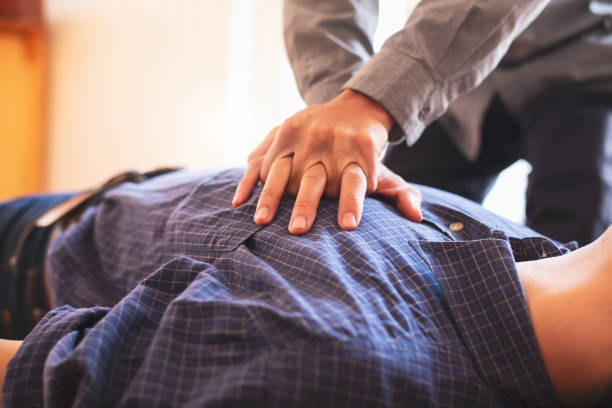
When a heart stops, every second’s matter. But too often, when someone has a cardiac arrest away from a hospital, people in a position to help don’t.
Misunderstandings about CPR can keep people from acting. That costs lives. We asked experts to help clear things up.
If you see a teen or adult suddenly collapse, call 911 and don’t wait for professional rescuers.
Each minute that CPR is delayed decreases the odds of survival by about 10%, research has shown. But having a bystander perform CPR doubles or triples the chances of surviving.
One of the biggest misconceptions about CPR, is that you can harm someone in cardiac arrest.
The biggest risk is not doing something. Whether it’s concerns about legality, propriety or breaking bones, there is actually more potential harm by not doing or participating in providing bystander CPR when somebody collapses in front of you.” Good Samaritan laws protect people who step in to provide lifesaving care.
If someone’s heart has stopped, they’re already dead. So any problems caused by CPR are not as bad as not doing CPR.
The steps for responding to a cardiac arrest, according to the AHA, are:
– Check for responsiveness.
– Call 911 or, if other people are on hand, have a second bystander make the call. 911 operators can guide rescuers through CPR.
– Begin CPR while a second bystander retrieves an automated external defibrillator, or AED, if one is nearby. Do not stop CPR to go look for an AED.
To perform CPR, place the heel of one hand in the center of the chest. Place the other hand on top and interlock the fingers. Push straight down hard and fast at 100 to 120 beats a minute.
Training is great, and refresher courses are important, But you “absolutely” do not required to have a card to perform CPR.
If you see someone collapse, shake the patient gently and ask, “Are you OK?”
If they are not breathing or are breathing with “agonal breaths,” when breathing is abnormal or it appears the person is gasping for air, start CPR.
People used to be told to check for a pulse. Find the spot in the middle of the chest, between the nipples and start pressing hard and fast.
Chest compressions might require opening or cutting away someone’s bulky clothing or removing a bra to reach the middle of their chest or apply AED pads. “It is important that people also have an image of how they would do that because even though it may be a little uncomfortable, they can save a life.
Don’t be wary of breathing into a stranger. These days, training emphasizes hands-only CPR for the first few minutes, which has been shown to be as effective as conventional CPR with rescue breaths in the first few minutes after cardiac arrest in adults and teens.
Mouth-to-mouth resuscitation – two rescue breaths after every 30 compressions – is important, however, for infants and children and if someone’s heart stopped because of choking or drowning, compressions-only is still great.
If someone falls in a twisted position, you might have to straighten them out to get them on their back. If they are on a bed or couch, it is best to lower them to the ground so that CPR can be performed on a firm surface.
Some people think they’ll never need to use CPR. They’ll say, “My family’s healthy,” or they think it’s unlikely they’ll encounter anybody who needs help.
Research shows more than 70% of cardiac arrests happen in a home or private residence. Learning CPR should be part of any family’s safety plans,
Taking a CPR course will help people know how to respond during an emergency situation.
